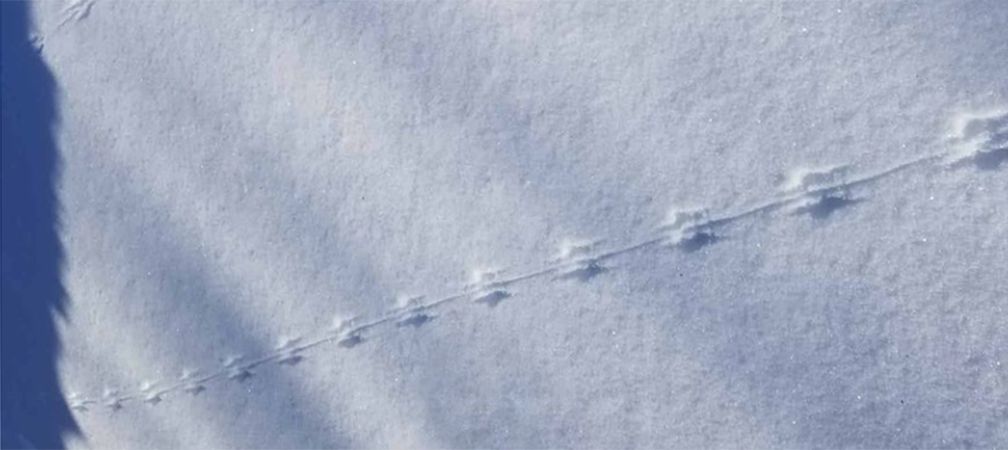Ontario Nature Blog
Receive email alerts about breaking conservation
and environmental news.
© Lora Denis
Ruffed grouse tracks © The Real Kam 75 CC BY-SA 2.0
For some, the winter months are a time to retreat indoors and avoid the cold at all costs. Some animals do the same, as they hibernate where the frost can’t reach, like salamander or woodchucks. Other animals keep Ontario’s natural areas bustling with life as they’ve learned how to adapt and forage throughout the winter. Hiking during the winter is one of the only times of the year when we can interact with wildlife in a way that no other season can offer: through snow tracking.
Tracks in the snow remind us that we share the land with other animals, many of which navigate it in winter so much better than we do. Snow can hold stories of animals that have crossed our path before we arrived. They can tell us of a shrew taking a leisurely stroll earlier that morning or a cotton tailed rabbit, halted in its tracks after being hunted by a barred owl.

The shape of the snow track can of course indicate what animal left it, but they also hold more information. The depth of the track can indicate the weight and size of the animal. For instance, a group of deer tracks in varied sizes and depth is a likely sign that a deer and two fawn walked by the same morning. Tail drags, which are lines in between tracks, with little depth, are often left by small rodents. Snow tracks have also been used to detect DNA in rare species such as the endangered Canada Lynx – all information we otherwise could not have known during other seasons.

If you need to encourage others to join you on a winter hike, let them know that this phenomenon may become something of the past by the year 2050.
As we live through the climate crisis, local environmental impacts are becoming increasingly more obvious. Snow will become scarcer as winters become milder, and it will become more difficult to predict climate. Reliable snow mass data is often used to validate climate models and in water resource management.
Climate projections for Ontario suggest a 3.4°C to 4.1°C increase in mean winter air temperature and an 11% to 17% increase in mean winter precipitation. While we know warmer winters have increased the survival rate of insects such as ticks and is associated with the Lymantria moth outbreak, we experienced this past summer, also means that snow is becoming less prevalent.
Less snow cover means that sunlight is reflected less than normal in the winter, and instead, heat from the sun is being absorbed and retained through the soil. Typically, the land has an opportunity to cool off during the night, which is longer in the winter. However, the mean night temperatures are increasing as greenhouse gasses prevent the planet from cooling off. This is just one of the many positive feedback loops of climate change we are witnessing in Ontario. Winter is changing and it is projected to change more. With wetter winters and increased flooding projected for Ontario and Quebec, the flood prevention capacity of conservation areas are something we will depend on even more.

This doesn’t mean that tracking will be a thing of the past altogether. It means that they won’t be found in snow, instead perhaps in mud. Though the year 2020 brings many changes to our Canadian winter experience this year, we will still be lucky enough to have snow on the ground (in most places) and we should embrace the cold while its here. There is nothing like walking through a forest. On a hike at Awenda Provincial Park, I remember being surrounded by a blanket of untouched, white snow and towering trees. Everything was completely silent and still other than snowflakes floating down. The whole scene appeared to be slow-motion.
If you are lucky enough to enjoy a few feet of snow where you are, get out there, see what wildlife share your local trails by doing some tracking! Here are some other examples of tracks you may find.

Gananoque Lake Nature Reserve © Smera Sukumar